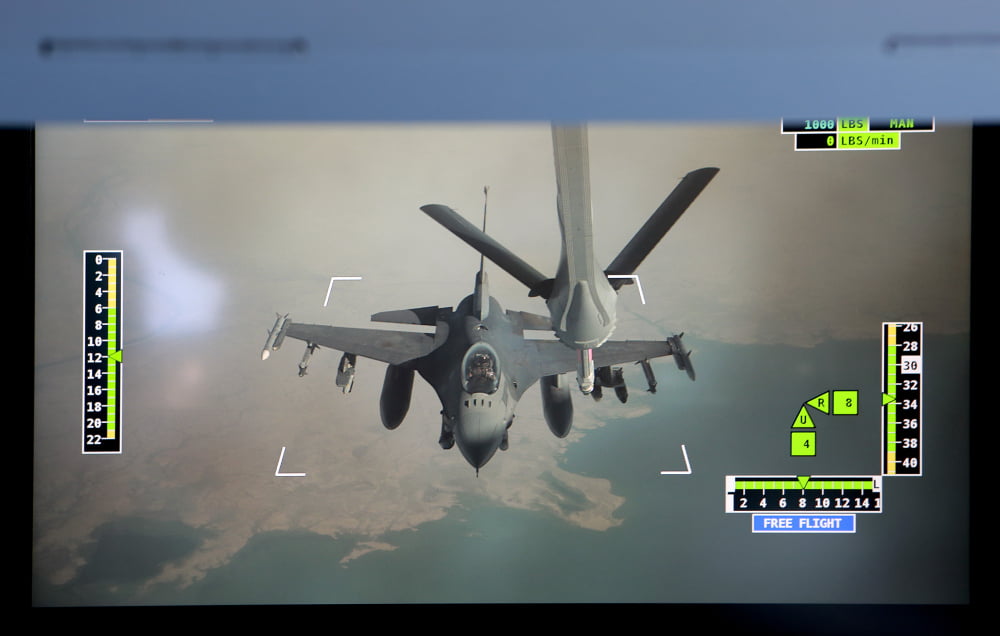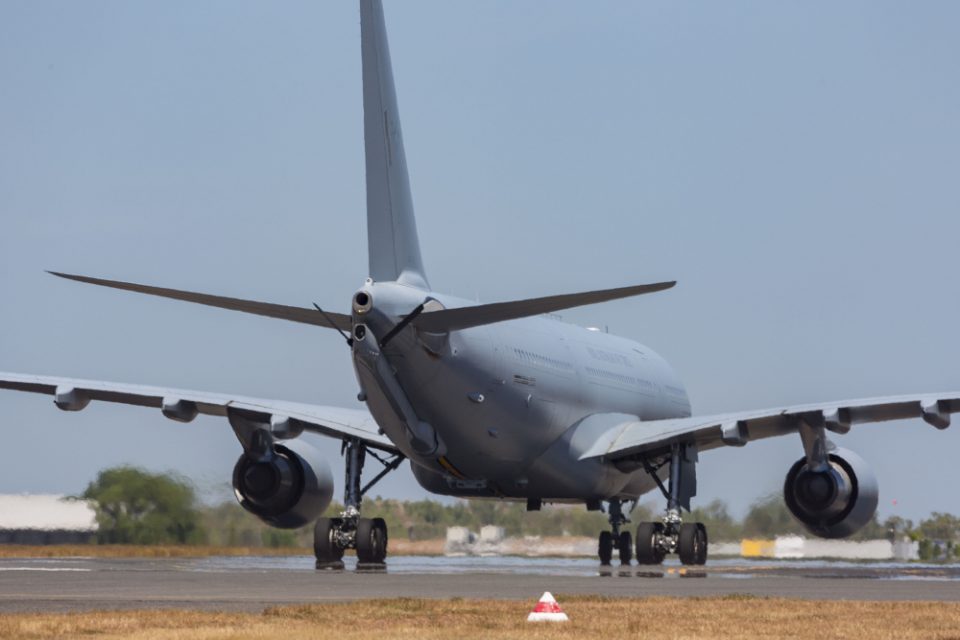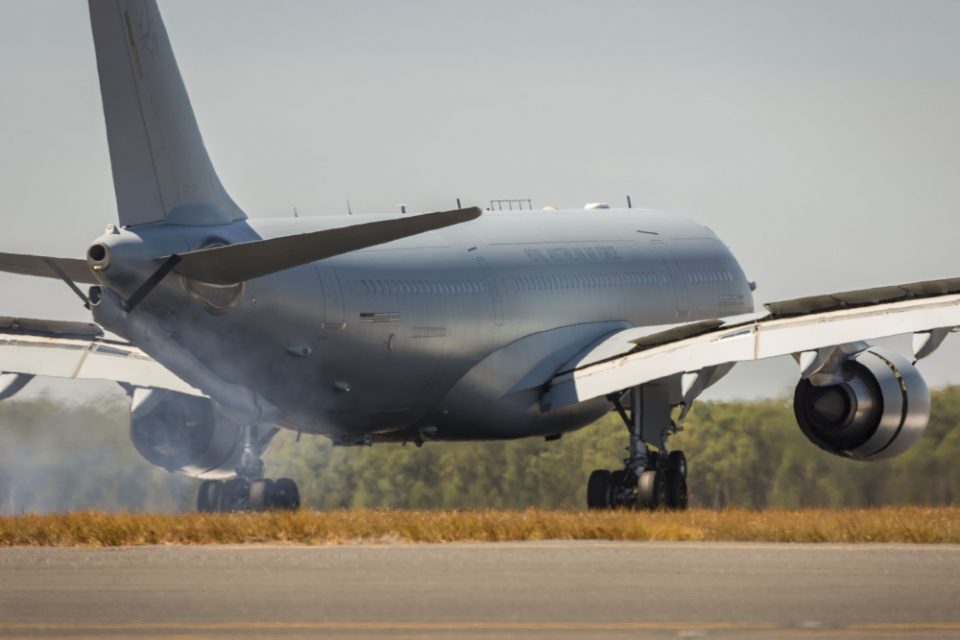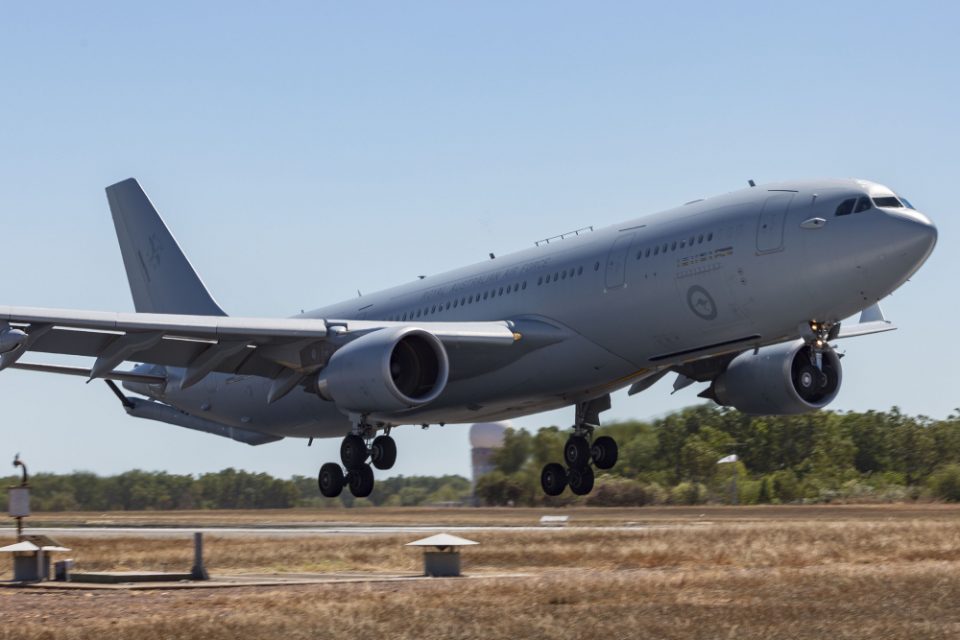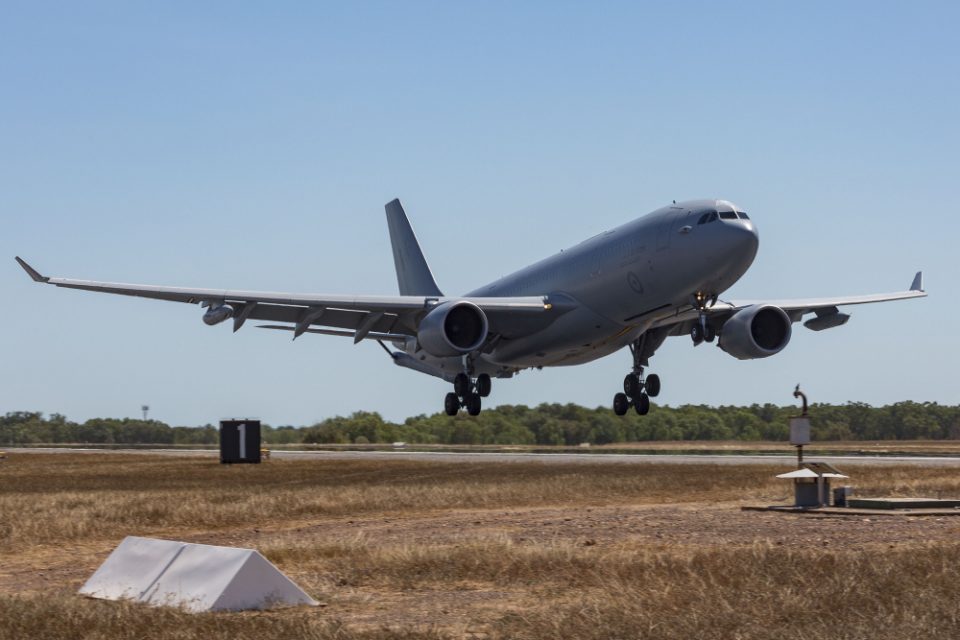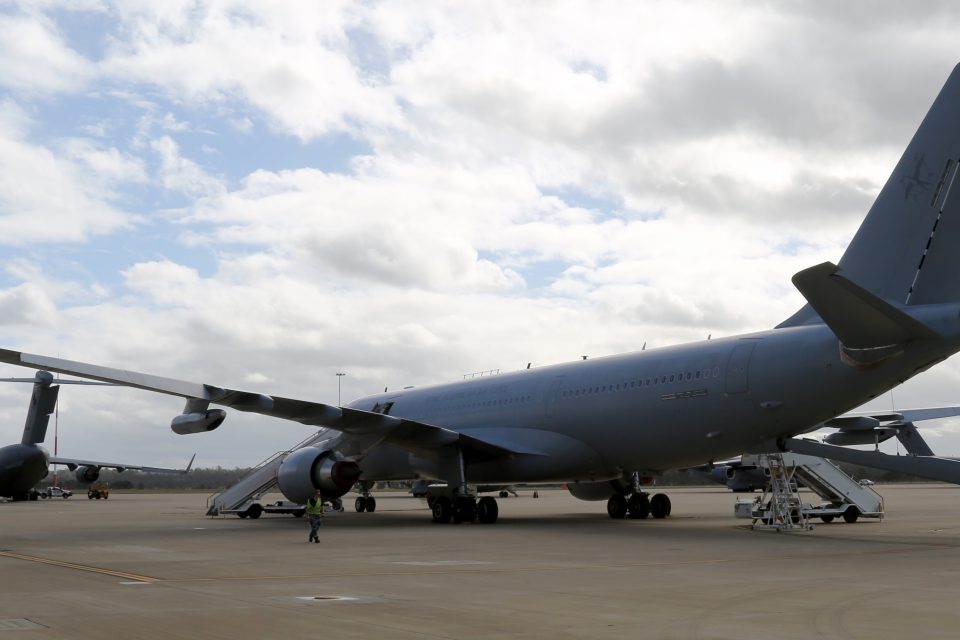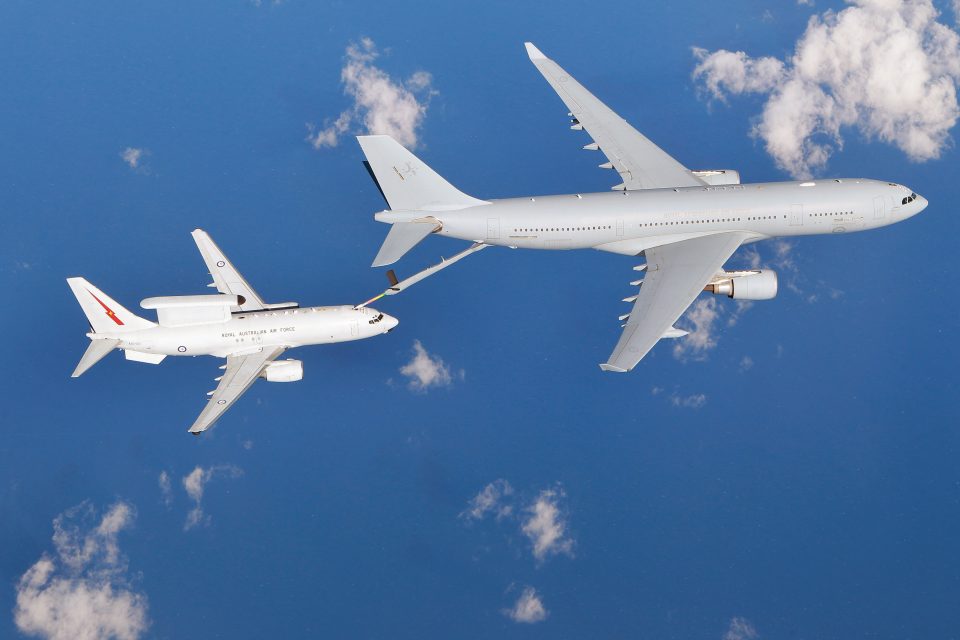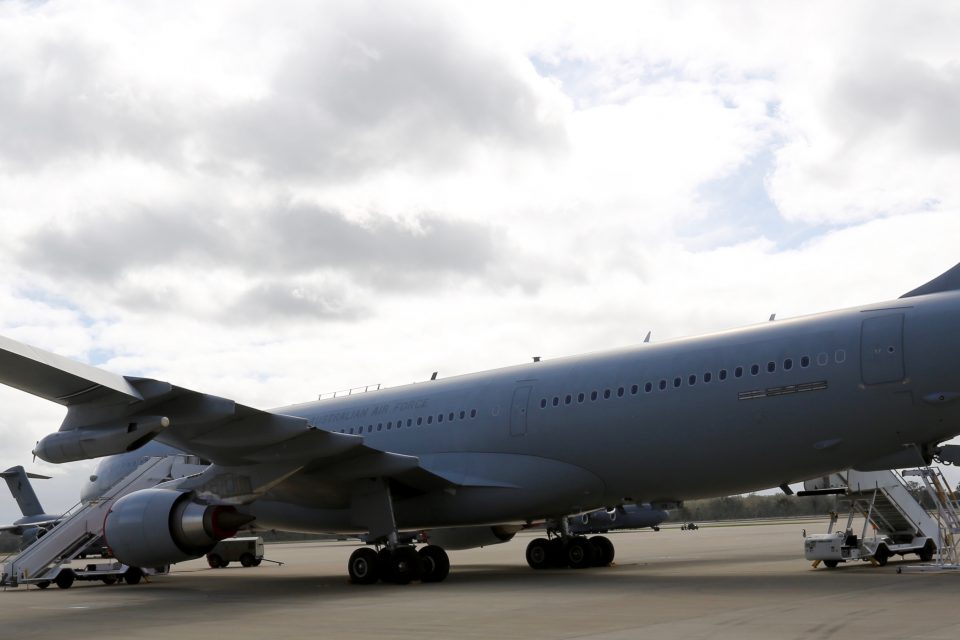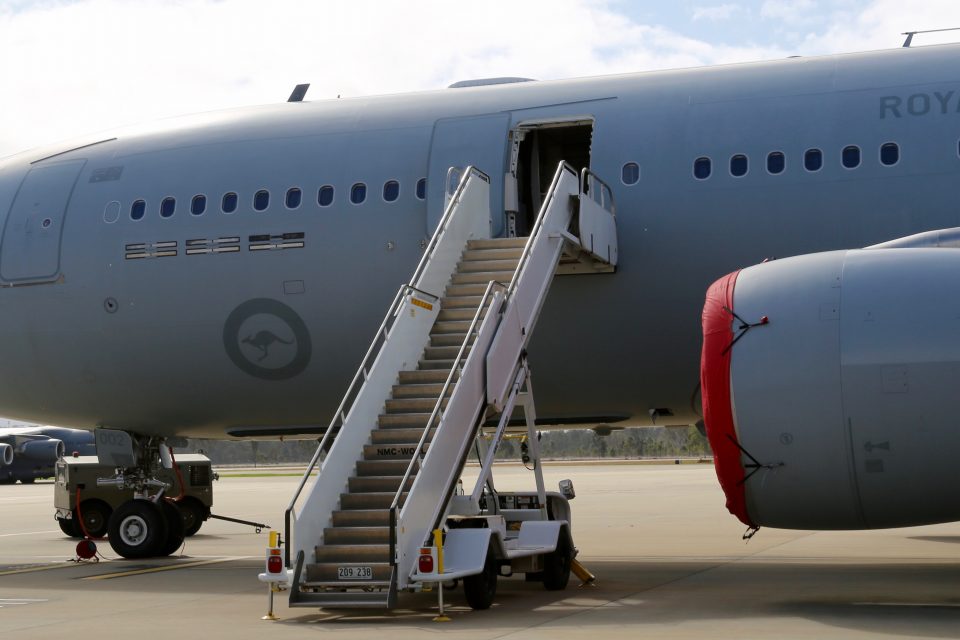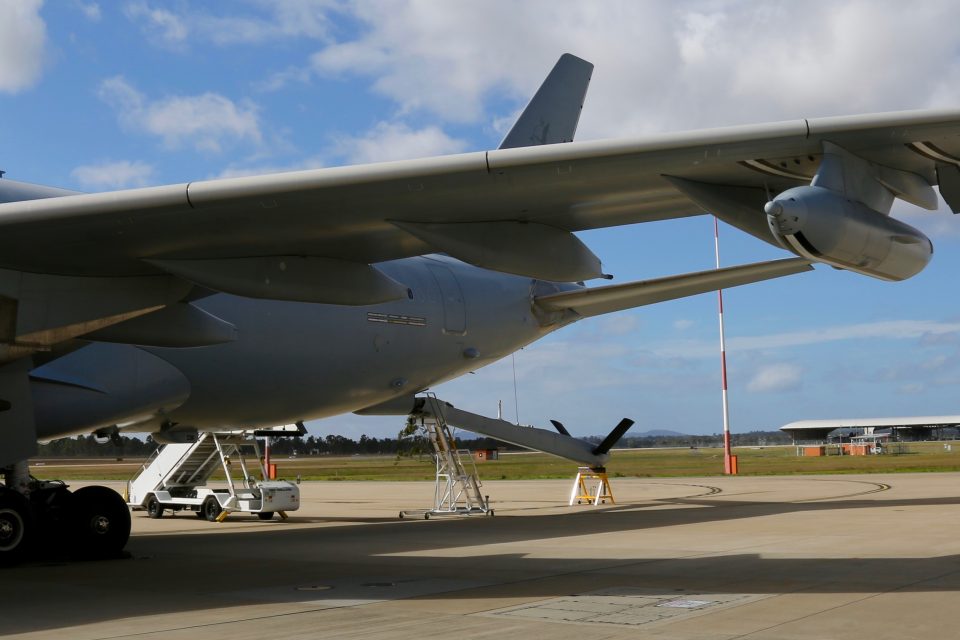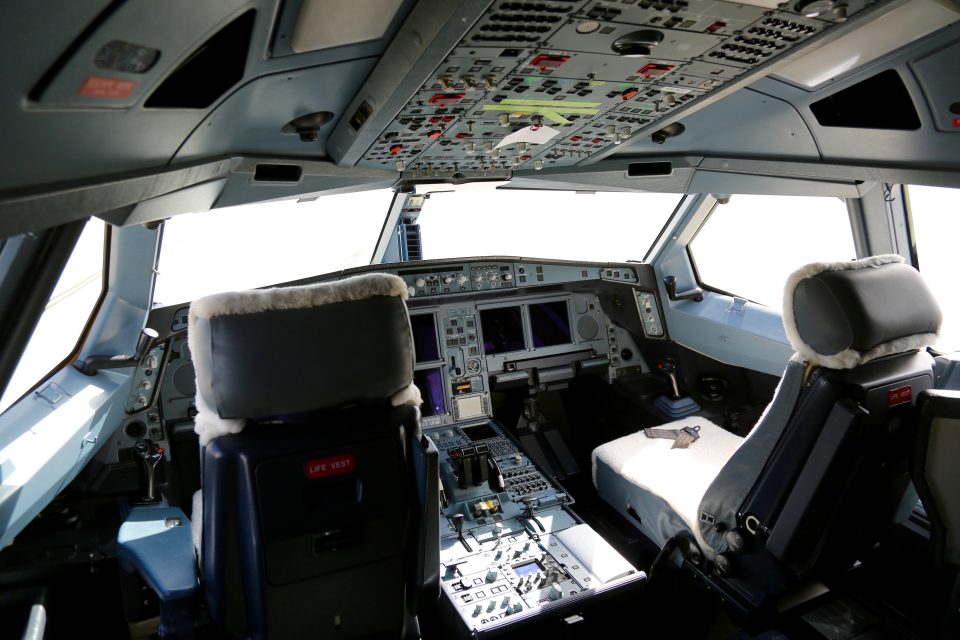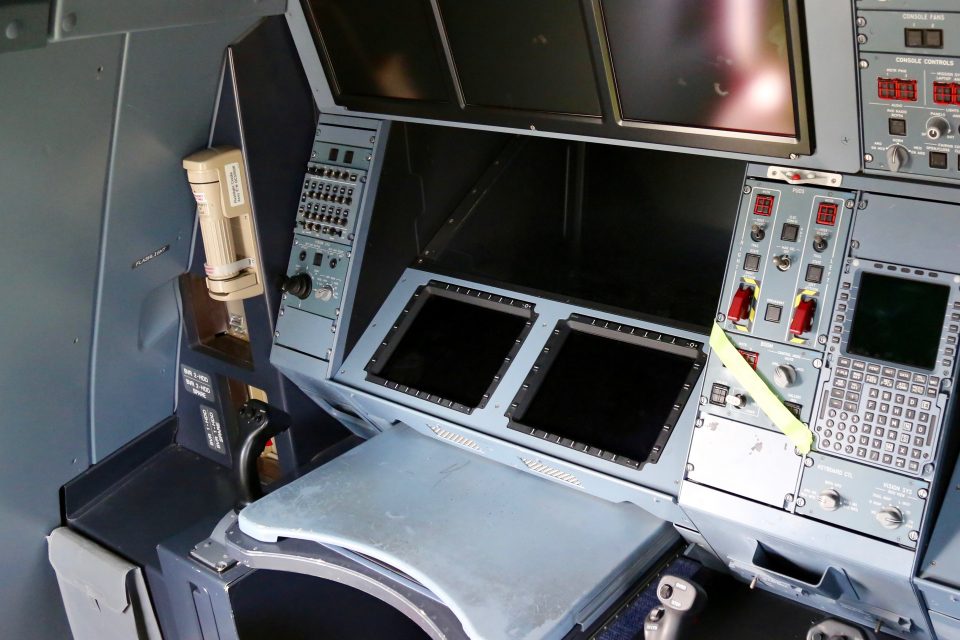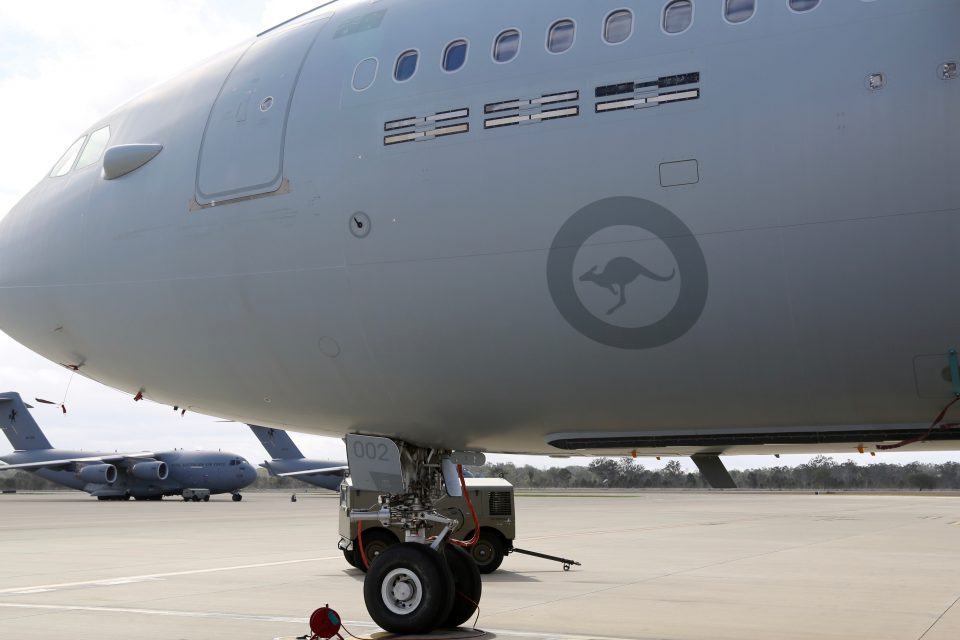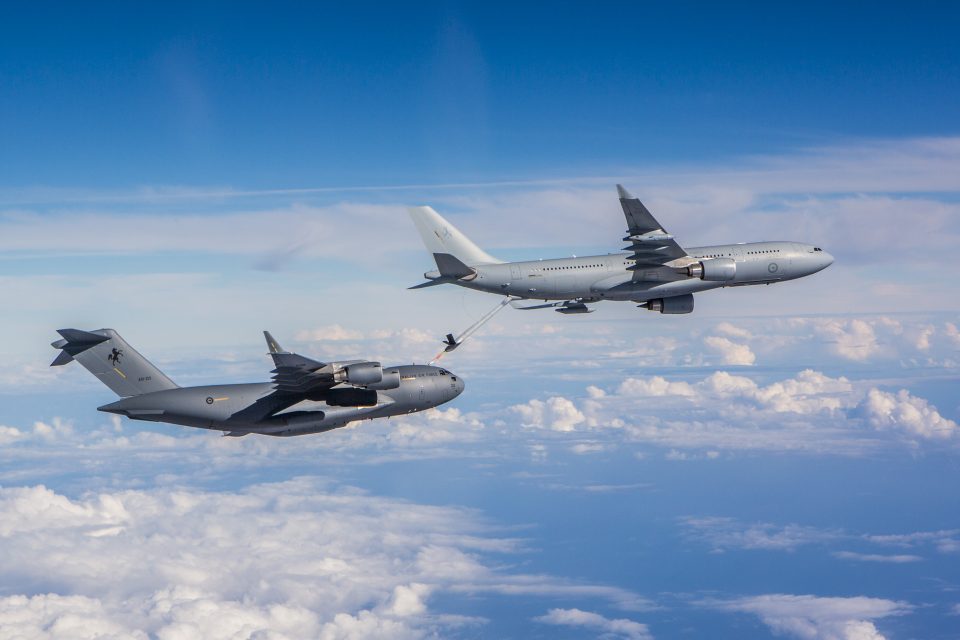2016-09-03 By Robbin Laird
I first visited the 33rd Squadron at Amberley Airbase in the first quarter of 2014 and had a chance to talk to the squadron about their new tanker. At the time, the KC-30A was “project of concern,” but now is a proven combat asset. What a difference 2 ½ years can make in the life of an aircraft!
During my visit in 2014, I highlighted a number of key developments.
During my time at the squadron, RAAF officers took me through the simulators and let me try my hand at lowering the virtual boom to tank an F-16.
Two of the five planes were at RAAF Base Amberley during the visit.
Three of the five Aussie tanker aircraft are currently involved in maintenance, upgrade, testing, and residual acquisition activities in Madrid and Australia. The squadron fleet should be at full strength in 2015.
Last year, in combination with Australian C-17s, the KC-30A squadron supported several F/A-18 deployments to Guam as well as Darwin and Tindal in Australia’s Northern Territory. This activity demonstrated the ability of the RAAF to move an air wing and support it at extended range with a tanker, while also providing airlift support.
This year the squadron has supported movement of Aussie F/A-18s from the United States across the Pacific and back to Australia.
Both operations underscore capabilities, which are part of shaping a 21st century Air Force.
From discussions at RAAF Base Amberley and in Canberra, it is clear that the squadron is a work in progress that represents a significant boost in capability for the RAAF. The tanker’s potential is a clear advantage as seen by senior RAAF officers.
Standing up the squadron, finishing the procurement and getting initial use of the tanker underway is a prelude for what comes next – working through the best ways to use the tanker with the RAAF, and to work out its interoperable role in the region and beyond.
While the squadron provides support to Defense, it is still very much involved in finishing the acquisition process for the tanker. The RAAF has really the world’s first operational squadron of the MRTT, and as the launch customer is working through the launch point for the foundational capabilities of the tanker.
This visit was quite different, and most of the squadron was out and about supporting exercises or operations.
It is a high demand asset and delivering effectively to that demand.
My earlier interview with the 86th Wing Commander, Group Captain Williams, underscored how significant the dyad of C-17 and KC-30A has become for the Australian Defence Force.
By providing sustainable global reach, Australia can protect its global interests more effectively.
According to Group Captain Williams: “The ability to reach out and affect the world has changed significantly for Australia.
“The idea a decade ago that we could effectively lodge a force anywhere in Europe and operate at short notice was unimaginable.
“For example, in our response to the downing of Malaysian airlines Flight 17, the KC-30A and C-17 force, in terms of seat miles and ton miles, did more lifting in 15 days than Australia did in the Berlin Airlift and we were in the Berlin Airlift for a significant period of time.”
I also had the chance to talk with Squadron Leader Ben and Wing Commander Robert Williams, the Officer Commanding 33rd Squadron.
That conversation highlighted both the progress made with the KC-30A and earmarking a way ahead from the Squadron perspective.
Question: How has the plane and crews performed to date in operations in the Middle East?
Answer: “In the Middle East, we’re seeing reliability, or mission dispatch rates, up near 96%.
“Some months it’s 100%. From a maintenance perspective, we’re probably looking at a serviceability rate of about 97%-98% for our MER ops.”
Question: In your view, why has the plane performed as well as it has?
Answer: “I haven’t really considered that before but it is an aircraft built on a proven and mature platform, an A330-200.
“It’s been around for many years. It retains much of its green aircraft architecture.
“That’s why we see those dispatch rates.
“It largely provides almost airline-like dispatch rates.”
Question: In talking to your crews and senior RAAF leadership, one key feature, which has been highlighted, has been the capability of the crew to operate in the battlespace by moving to the customer, rather than flying classic tanker tracks.
Could you comment on that aspect of your con-ops?
Answer: “That is a good point.
“When you were here last we were in the process of getting the planes into service and we were not focused on the operational change part of the equation.
“But it is clear that the crews are operating in the MER by servicing the fighters in the battlespace and trying to shape a con-ops of service to the point of need, rather than operating as a rotating gas station in the sky.
“Obviously, this has worked in large part because of permissive airspace, and our con-ops will adjust to the situation.”
Question: What is your sense of growth within the squadron?
Squadron Leader Ben: “This is my 10th year with the squadron. I have been here since 707 times. I was on the initial crew for this aircraft when it arrived here and then moved elsewhere and have now come back.
“The difference between when I left in 2012 and now is black and white.
“There were a lot of issues with the aircraft several years ago, mainly related to the pods and pod refueling. Cobham has largely remedied these issues, and we see ourselves in a position where our rate of effort is five or six times what it was several years ago.
“The pods are now a very reliable piece of equipment.”
Question: It is not widely realized outside of the tanker community that the KC-30A is a software driven aircraft unlike earlier tankers.
Could you talk to that aspect of the platform?
Answer: “The 707 was a totally mechanical aircraft. This aircraft is a fly by wire aircraft, which means that effectively computers control each system.
“For example, there are two refueling computers controlling the refueling equipment.
“The green aircraft side of the plane means that the systems used by commercial Airbus drives upgrades to basic flight capabilities of the aircraft.
“We’ve got military modifications, and software and computers operating in conjunction with the green Airbus computers and software.”
Question: What is the next big shift in your tanker community?
Answer: “Clearly, the coming of the boom.
“Our Air Force has been largely a hose and drogue force. With the C-17 and Wedgetail we are using booms and as the JSF comes on line we will become predominantly a force being refueled by the boom.”
Question: Where do you see the most progress over the past 2 ½ years?
Answer: “Our people are being recognized as contributing significant new capability to our air force and our nation. That is the most satisfying result.
“And the shift to boom operations is a big change and an exciting one.
“We are shifting from moving the hoses out for refueling to a more hands-on effort required for doing the booming.
“The job is changing from a managing one and flicking switches to actually managing a flight control and using a boom.
“It is satisfying for our crews to actually put their hands on something that is totally new for the Australian Air Force and to be successfully doing so.”
For earlier pieces discussing the KC-30A and the 33rd Squadron, see the following:
https://sldinfo.com/visiting-amberley-airbase-australia-an-update-from-the-86th-wing-commander/
https://sldinfo.com/visiting-the-33rd-squadron-raaf-amberly-air-base-australia/
For a piece providing a comprehensive look at the evolution of the Airbus tanker, see the following:
https://sldinfo.com/an-update-on-the-airbus-tanker-the-aussie-experience/
And for a PDF version of the above article:
https://sldinfo.com/wp-content/uploads/2015/09/Update-on-Airbus-Tanker.pdf
And for two pieces published by the RAAF which discuss the F-35 and Wedgetail as demand side assets for the KC-30A boom, see the following:
AFHQ, 18 June 2015.
Air Force has completed air-to-air refuelling trials between its KC-30A Multi-Role Tanker Transport and E-7A Wedgetail aircraft.
Conducted in airspace off the coast of northern New South Wales from 1-13 June 2015, the trials marked the first time the Wedgetail has refuelled from the KC-30A.
Wing Commander Christian Martin, Commanding Officer of Number 2 Squadron (2SQN), said air-to-air refuelling was a ‘force multiplier’ for the Wedgetail fleet.
“Air-to-air refuelling considerably increases the Wedgetail’s range and endurance, allowing us to provide Command and Control, and Air Battlespace Management over longer periods,” Wing Commander Martin said.
“This has been demonstrated in the Middle East Region under Operation OKRA, where RAAF Wedgetails have used foreign air force tankers to fly extended sorties.
“Once the trial results are assessed an initial clearance is expected to be granted to allow Wedgetail crews to begin refuelling training flights with the KC-30A.”
The trials were conducted by Air Force’s Aircraft Research and Development Unit (ARDU) with a 2SQN Wedgetail and Number 33 Squadron (33SQN) KC-30A.
Squadron Leader Ben, Executive Officer of 33SQN, said air-to-air refuelling required both aircraft to fly in close formation at more than 500 kilometres per hour.
“The KC-30A deploys the 17-metre-long Aerial Refuelling Boom System (ARBS) from the aft fuselage, which is guided by an Air Refuelling Operator on the KC-30A into a refuelling receptacle on the Wedgetail,” Squadron Leader Ben said.
“Each KC-30A has a fuel capacity of more than 100 tonnes, and can offload fuel via the ARBS at up to 4500 litres per minute.
“The ARBS on the KC-30A represents a completely new capability for Air Force.”
The KC-30A has already been cleared to refuel Air Force’s fleet of Hornets and Super Hornets using its hose-and-drogue refuelling pods. Since September 2014, KC-30As deployed to Operation OKRA in the Middle East Region have used these pods to deliver more than 10,800 tonnes of fuel to RAAF and Coalition aircraft.
First Refuel for RAAF KC-30A Refueler to F-35A
29 September 2015
The Royal Australian Air Force (RAAF) has completed the first fuel transfer with the air refuelling boom from a RAAF KC-30A Multi-Role Tanker Transport (MRTT) to a US Air Force (USAF) F-35A Joint Strike Fighter at Edwards Air Force Base in California. A total of 59 contacts were conducted of which five contacts transferred 43,200 pounds of fuel during the four hour sortie.
Chief of the Air Force, Air Marshal Leo Davies AO CSC, described the trial as a significant step in the development of the KC-30A’s capability.
“Our KC-30A is an essential force multiplier. Mid-air refuelling is critical to ensuring global reach for our aircraft, our people and our equipment,” Air Marshal Davies said.
“Refuelling between the KC-30A and F-35A is an important step towards the KC-30A’s achievement of Final Operational Capability (FOC) and represents continued progress in the development of the F‑35A.
“This achievement is significant because the future of Australia’s air combat capability is reliant on the successful partnership between these two aircraft and our ability to be interoperable with our international partners,” Air Marshal Davies said.
The KC-30A has two refuelling systems – the hose-and-drogue and Advanced Refuelling Boom System (ARBS). The two different refuelling systems allow RAAF to support a wide range of coalition aircraft on Operation OKRA where a KC-30A is currently deployed to support combat operations against Daesh in Iraq and Syria.
The five KC-30As are based at RAAF Base Amberley (QLD) and Air Force will receive an additional two in 2018. A single KC-30A can carry a fuel load of more than 100 tonnes and remain 1800 kilometres from its home base with 50 tonnes of fuel available for offload, for four hours.
Australia has committed to 72 F-35As for RAAF Bases Williamtown and Tindal, with the first aircraft arriving in late 2018. The F-35A will replace the ageing F/A-18A/B Hornet with a 5th-generation networked fighter aircraft.
http://news.defence.gov.au/2015/09/29/first-refuel-for-raaf-kc-30a-refueller-to-f-35a-jsf/
The first slideshow highlights the KC-30A in the recent Pitch Black 2016 exercise and is credited to the Australian Ministry of Defence.
The second slideshow highlights the visit of Second Line of Defense to Amberley in 2014.
The third slideshow shows the KC-30A as enabler of other air platforms and photos from the day at Amberley Airbase.
The first two photos are credited to the Australian Ministry of Defence and show the KC-30A refueling a Wedgetail and then the C-17.
The remaining photos in the slideshow are credited to Second Line of Defense


